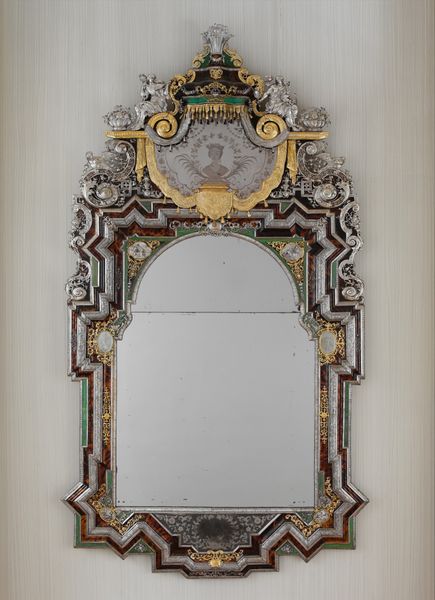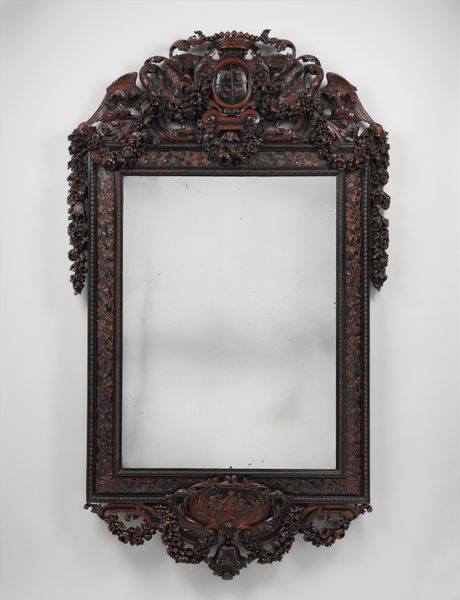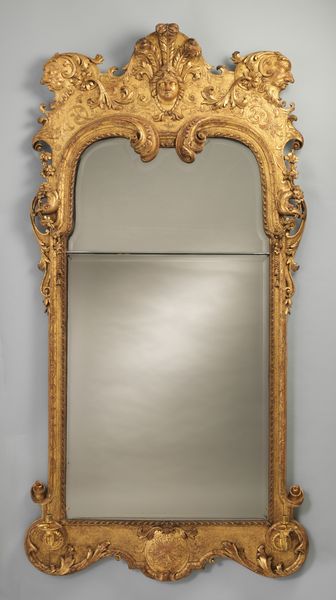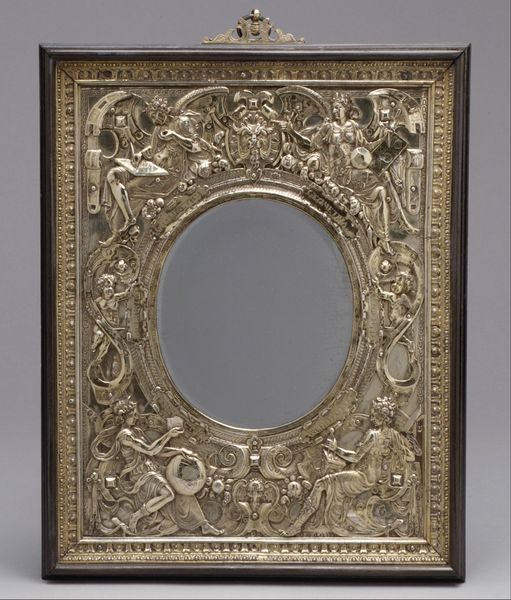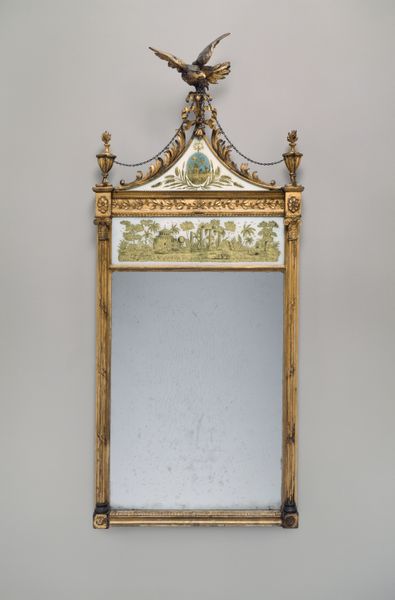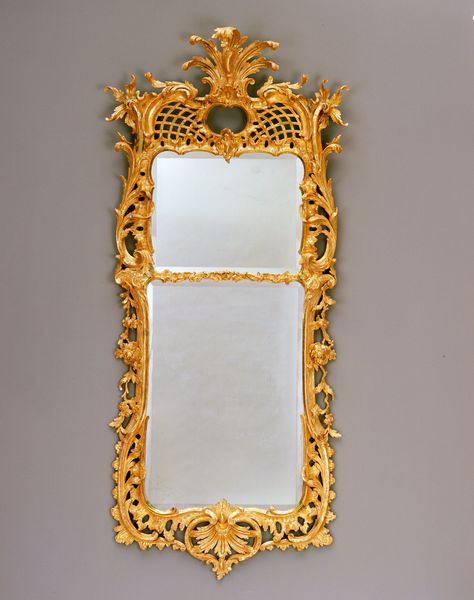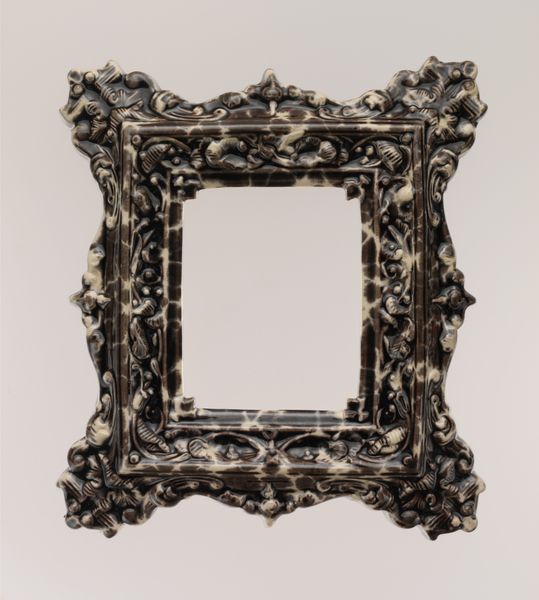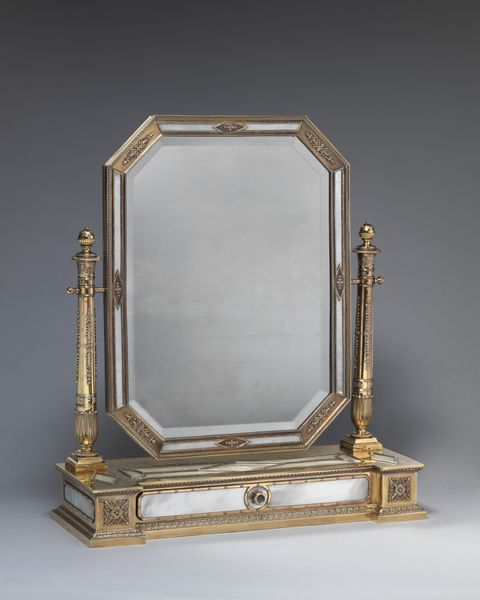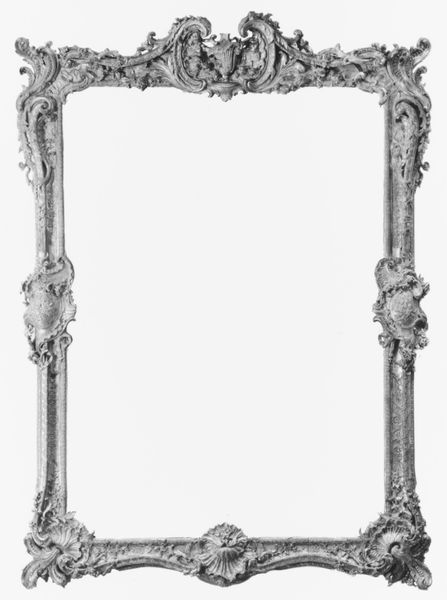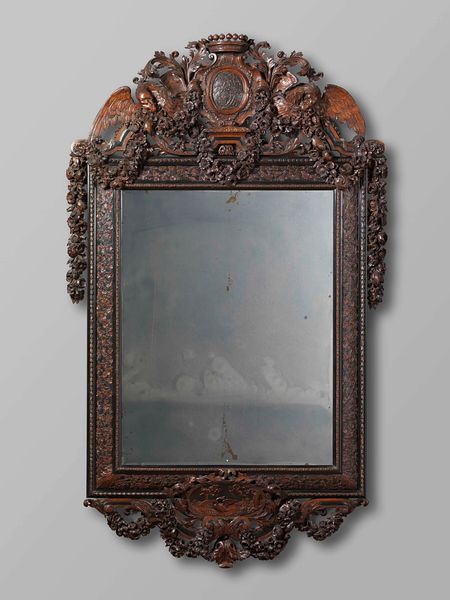
Spiegel, staand model, met geslepen randen en in een opengewerkte lijst van goud en zilver met ornamenten van parelmoer, bezet met granaten en carneool. Op achterzijde geschilderde Chinoiserieën c. 1700
0:00
0:00
metal, guilding
#
ornate
#
baroque
#
metal
#
jewelry design
#
guilding
#
decorative-art
#
decorative art
Dimensions: height 45.0 cm, width 36.5 cm, depth 3.0 cm
Copyright: Rijks Museum: Open Domain
This standing mirror, adorned with gold, silver, and mother-of-pearl, presents a fascinating dialogue between cultures. Its decorative program is striking. The use of precious materials elevates the object beyond mere utility, while the painted Chinoiserie on the back hints at the allure of the exotic East. The garnets and carnelians set into the frame evoke notions of wealth, status and protection. Consider how similar motifs have appeared in other contexts. The motif of the crown at the top for example, also appears in royal portraiture across Europe, projecting authority and divine right. Yet here, the crown seems almost playful, its seriousness tempered by the mirror’s intimate function. Over time, the crown has shed its purely religious connotations, becoming a symbol of secular power and even personal aspiration. The mirror itself holds a potent, almost magical quality, inviting not just reflection but also contemplation. In gazing upon it, we are confronted with our own image, stirring a sense of self-awareness that transcends time. The cyclical progression of symbols takes new meanings in different historical contexts, reflecting our deepest desires and fears.
Comments
No comments
Be the first to comment and join the conversation on the ultimate creative platform.
